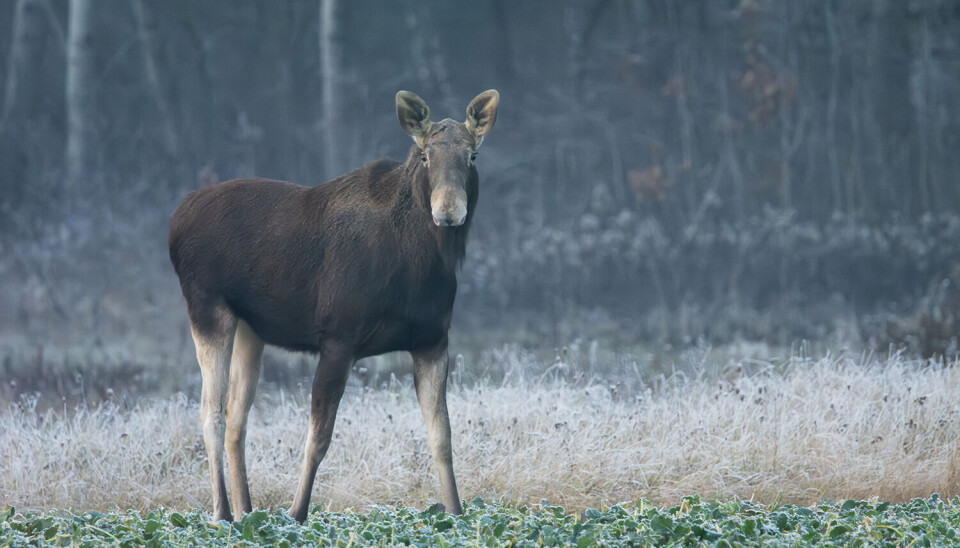THIS CONTENT IS BROUGHT TO YOU BY The Norwegian Veterinary Institute - READ MORE
Prions found throughout the body in moose and red deer with sporadic chronic wasting disease
In a new study, researchers have also demonstrated that these prions can experimentally transmit the disease to mice.

Chronic wasting disease (CWD) is a prion disease that destroys the brains of cervids, which are members of the deer family Cervidae.
This disease group also includes scrapie in sheep and goats, mad cow disease (BSE) in cattle, and Creutzfeldt-Jakob disease (CJD) in humans.
Prions detected beyond the central nervous system
Previously, prions were not found by standard diagnostic tests outside the central nervous system in Norwegian red deer (Cervus elaphus) and moose (Alces alces) with sporadic CWD.
However, a new study challenges results from routine diagnostic methods.
Through a highly sensitive method known as protein misfolding cyclic amplification (PMCA), the researchers detected prions in tissues other than the brain and spinal cord.
This finding aligns with how other prion diseases behave, such as the contagious classical scrapie in sheep and goats and CWD in North American cervid species, and the sporadic prion diseases like Nor98/atypical scrapie in small ruminants and atypical mad cow disease (BSE) in cattle.
In managing prion disease amongst animals there is an important distinction between strains: Those classical contagious strains that spread between live animals and the sporadic ones that appear in a random individual, thought not to be contagious.
Amongst animal prion diseases, only BSE in cattle has been shown to transmit to humans.
Muscle, nerve, and lymph node tissue examined
In the new study, researchers examined muscle, nerve tissue, and lymph nodes from Norwegian reindeer (Rangifer tarandus), red deer, and moose.
For contagious CWD, which affects Norwegian wild reindeer, prions were expected to be widespread throughout the body. However, in moose and red deer diagnosed with sporadic CWD based on brain tissue samples, prions had previously not been detected outside the central nervous system.
This study changes that understanding, showing that small amounts of prions are present in muscle, nerve, and lymphatic tissue.
Prions can be transmitted
Samples taken from moose were found to cause disease in laboratory mice when also material from tissues outside the brain was directly inoculated into their brains.
Such rodent experiments, known as bioassays, are used to demonstrate infectivity and to distinguish
different prion strains.
This experiment demonstrates that the disease could be transmitted from tissues outside the central nervous system, despite the fact that the sporadic type is not likely to spread between living individuals.
No assessment of human transmission risk
The researchers emphasise that the study does not investigate the risk of transmission to humans. It therefore does not change previous assessments that CWD is an animal disease.
The only published study that examined Norwegian prion material using a human bioassay reported no transmission from moose or reindeer to a mouse model. This model included genetically modified mice expressing the human prion protein, PrP.
Potential exposure through consumption
“Our findings, including prion detection in muscle, might indicate potential exposure through consumption but do not provide insights into public health risks,” says Tram Thu Vuong.
She is the first author of the study and a researcher at the Norwegian Veterinary Institute.
“Further studies are needed to understand these new CWD strains discovered in the Nordic region,” she says.
Jørn Våge, a researcher and CWD coordinator at the Norwegian Veterinary Institute, emphasises the importance of advancing scientific knowledge when knew infectious agents and diseases are discovered.
He also highlights the need for proper wildlife management.
“This is a signal to wildlife management that samples should be collected from dead or culled wildlife, and that carcasses of animals with confirmed sporadic CWD should be removed from nature and destroyed,” he says.
References:
Vuong et al. Prions in Muscles of Cervids with Chronic Wasting Disease, Norway, Emerging Infectious Diseases, vol. 31, 2025. DOI: 10.3201/eid3102.240903
Wadsworth et al. Humanized Transgenic Mice Are Resistant to Chronic Wasting Disease Prions From Norwegian Reindeer and Moose, Journal of Infectious Diseases, 2022. DOI: 10.1093/infdis/jiab033

This content is paid for and presented by the Norwegian Veterinary Institute
This content is created by the Norwegian Veterinary Institute's communication staff, who use this platform to communicate science and share results from research with the public. The Norwegian Veterinary Institute is one of more than 80 owners of ScienceNorway.no. Read more here.
More content from the Norwegian Veterinary Institute:
-
Can Norwegian reindeer provide new insights into chronic wasting disease?
-
The sudden death of this anaconda in Norway led to an unusual necropsy
-
A new method can provide improved PD monitoring of farmed fish
-
Tick-borne encephalitis-virus found in unpasteurized cow milk in Norway
-
How many CWD-infected animals are out there?
-
Wild and farmed fish infect each other




































